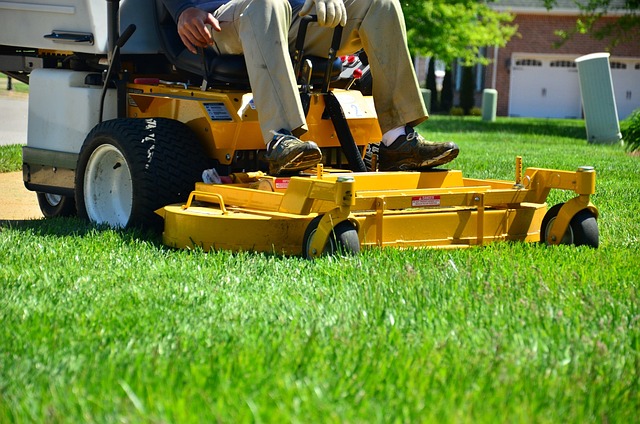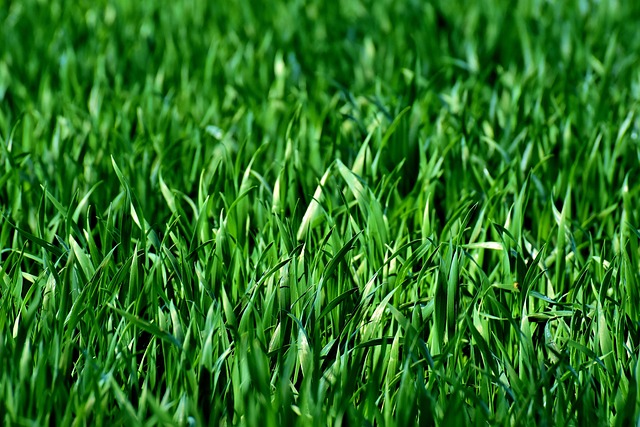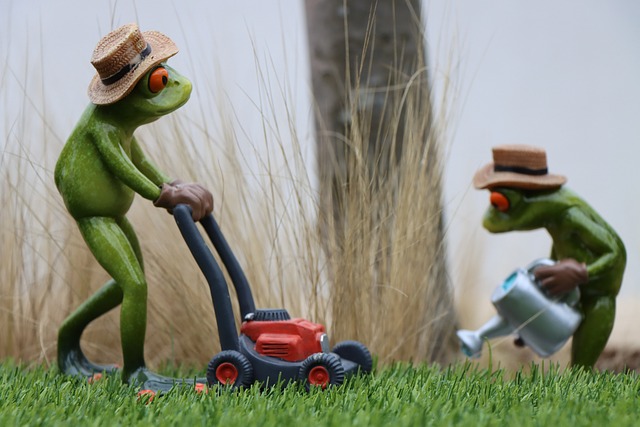Mulching improves soil health, conserves moisture, and protects plants from extreme temperatures, while edging techniques, including string trimmers, garden knives, and edging shears, ensure neat lawn edges and prevent grass from encroaching on paths. Lawn care and landscaping encompass caring for grass, watering, fertilizing, and creative designs using native plants, water features, and structured gardens to transform outdoor spaces into vibrant oases.
Transform your lawn from ordinary to extraordinary with mulching and edging, essential practices in lawn care and landscaping. This comprehensive guide explores the benefits of mulching—from retaining moisture to suppressing weeds—and offers best practices for optimal results. We delve into various edging techniques to achieve a neat, polished look. By integrating these two techniques, you’ll cultivate a lush, well-maintained lawn that becomes the envy of your neighborhood.
- Understanding Mulching: Benefits and Best Practices
- Edging Techniques for a Neat Lawn Appearance
- Integrating Mulching and Edging for Optimal Lawn Care
Understanding Mulching: Benefits and Best Practices

Mulching is an essential practice in lawn care and landscaping, offering a multitude of benefits for your outdoor space. By adding a layer of organic or inorganic material—commonly known as mulch—around plants, trees, and gardens, you create a protective barrier that enhances overall health and beauty. One of the primary advantages is its ability to retain soil moisture, reducing the frequency of watering and fostering healthier plant growth. This natural insulator also protects roots from extreme temperatures, ensuring your lawn remains vibrant year-round.
Best practices involve applying mulch evenly, typically 2-4 inches deep, to avoid smothering plants. It’s crucial to choose the right type for your needs; organic mulches, like wood chips or straw, decompose over time, enriching the soil, while inorganic options, such as stones or rubber, offer longer-lasting protection and prevent weed growth without adding nutrients to the soil. Regularly replenishing mulch ensures its effectiveness, especially in high-traffic areas where it may compact over time.
Edging Techniques for a Neat Lawn Appearance

Maintaining a neat and well-defined lawn edge is an essential aspect of lawn care and landscaping, enhancing the overall aesthetic appeal. One effective technique involves utilizing edging tools, such as string trimmers or edgers, to create clean lines around borders and pathways. These tools are versatile and accessible, allowing for precise control while shaping the grass edges. For a more traditional approach, hand-held edging tools, like garden knives or edging shears, offer precision cutting, ensuring a crisp finish along flower beds and other landscaping features.
Regular edging not only keeps your lawn looking polished but also prevents grass from encroaching onto paths and driveways, making it easier to maintain a clear distinction between different areas of your outdoor space. Incorporating these simple yet effective techniques into your lawn care routine will result in a lush, well-maintained lawn that becomes the envy of your neighborhood.
Integrating Mulching and Edging for Optimal Lawn Care

Mulching and edging are essential components of effective lawn care and landscaping. By understanding the benefits and best practices of mulching, along with mastering various edging techniques, you can significantly enhance your lawn’s appearance and health. Integrating these two practices allows for optimal nurturing of grass roots, suppression of weeds, and a uniform, well-maintained landscape. Embrace these techniques to transform your lawn into a vibrant and inviting outdoor space.
